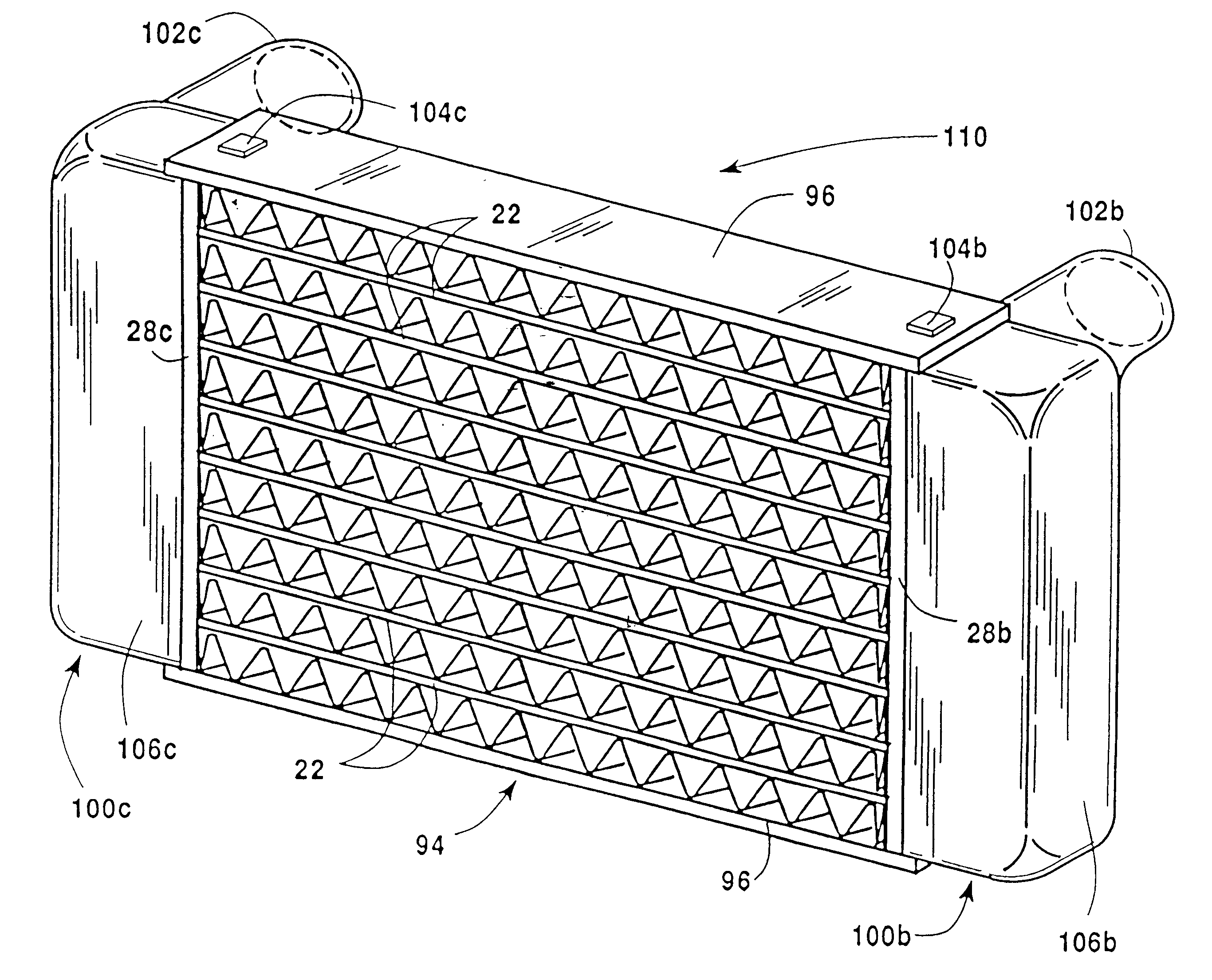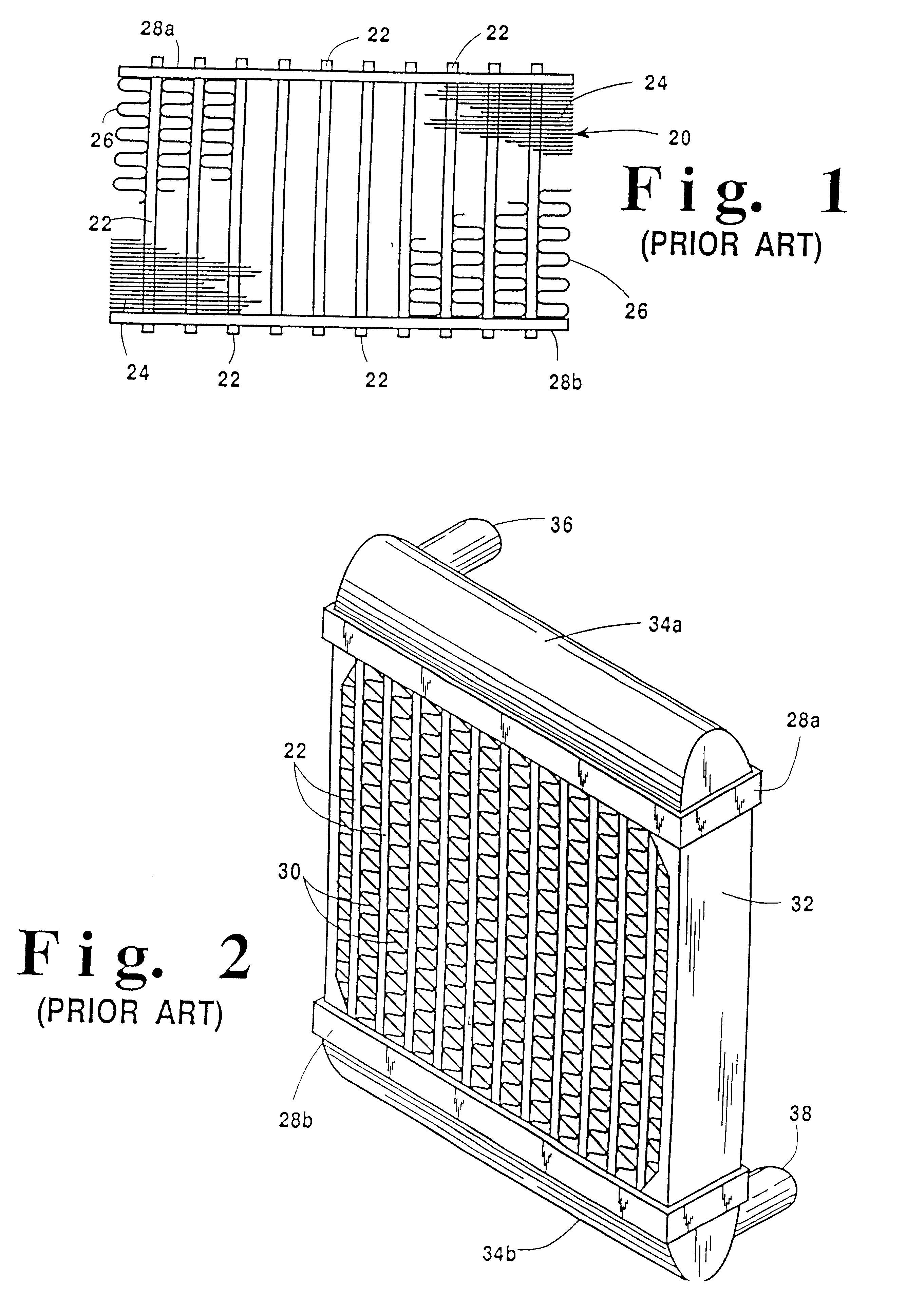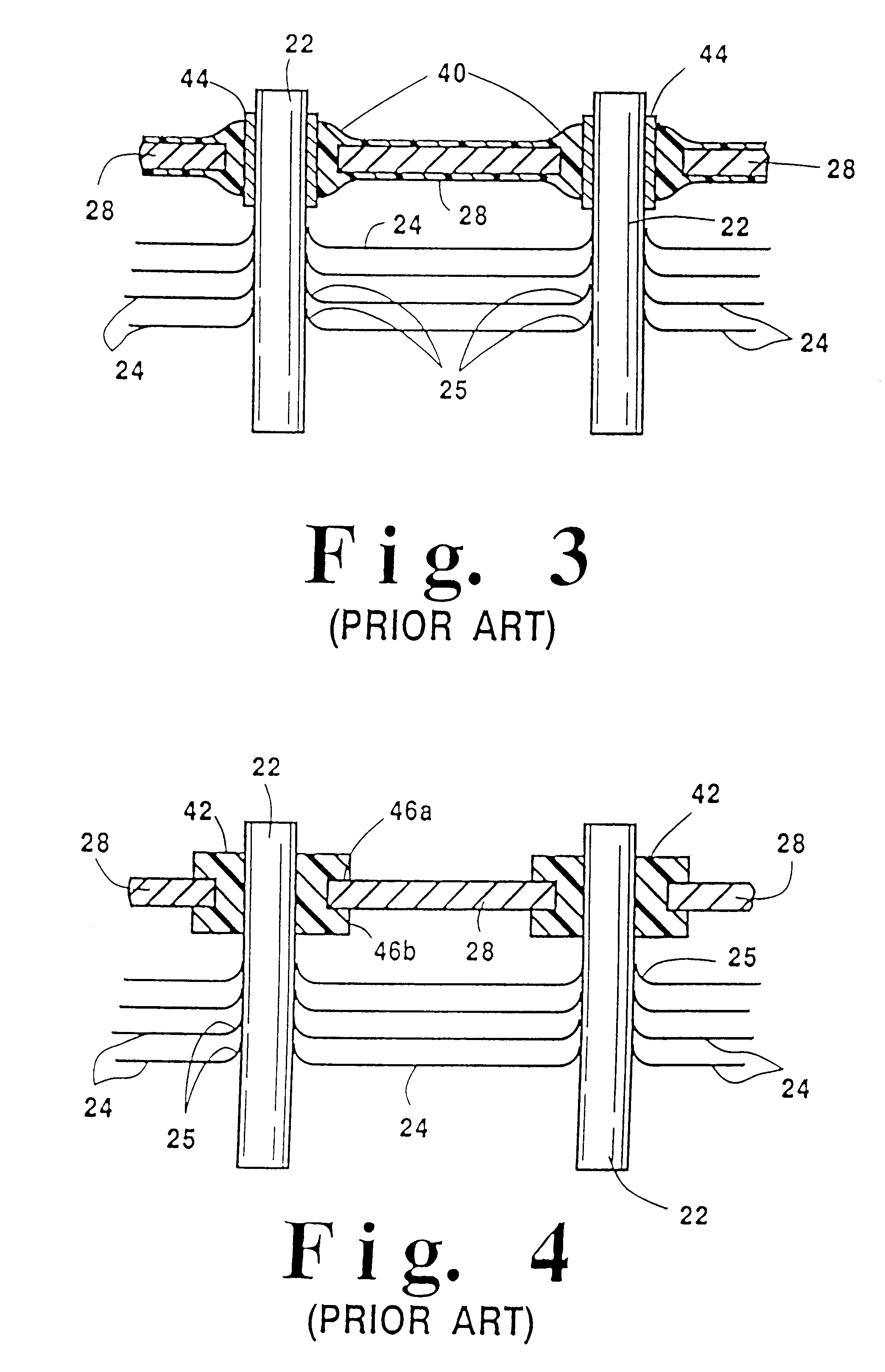Heat exchanger assembly utilizing grommets and integral cast tanks
a technology of heat exchangers and grommets, applied in indirect heat exchangers, machines/engines, lighting and heating apparatus, etc., can solve the problems of increasing the length of tubes, increasing the mechanical stress on the tanks and the associated headers, and increasing the stress on the tube-to-header joints
- Summary
- Abstract
- Description
- Claims
- Application Information
AI Technical Summary
Benefits of technology
Problems solved by technology
Method used
Image
Examples
Embodiment Construction
This invention is directed primarily toward an air-to-air heat exchanger used as a charge air cooler, or intercooler, for turbocharged or supercharged engines. However, it may also be utilized in any other type of heat exchanger, for example, those discussed in the background of the invention, such as radiators, oil coolers and the like. The present invention provides a heat exchanger which has an integral cast combined header and tank with openings in the header portion and a resilient tube-to-header portion joint to minimize tube-to-header stresses due to a combination of a thermal expansion of the tubes and internal pressure in the tanks. Preferably oval tubes are utilized for close tube spacing for optimum heat transfer performance of the core, although other tube shapes and cross-sections may be utilized.
In accordance with the present invention, the heat exchanger employs a combined cast header and tank having a header portion integral with a tank portion. As shown in FIGS. 5-7...
PUM
| Property | Measurement | Unit |
|---|---|---|
| Resilience | aaaaa | aaaaa |
Abstract
Description
Claims
Application Information
 Login to View More
Login to View More - R&D
- Intellectual Property
- Life Sciences
- Materials
- Tech Scout
- Unparalleled Data Quality
- Higher Quality Content
- 60% Fewer Hallucinations
Browse by: Latest US Patents, China's latest patents, Technical Efficacy Thesaurus, Application Domain, Technology Topic, Popular Technical Reports.
© 2025 PatSnap. All rights reserved.Legal|Privacy policy|Modern Slavery Act Transparency Statement|Sitemap|About US| Contact US: help@patsnap.com



